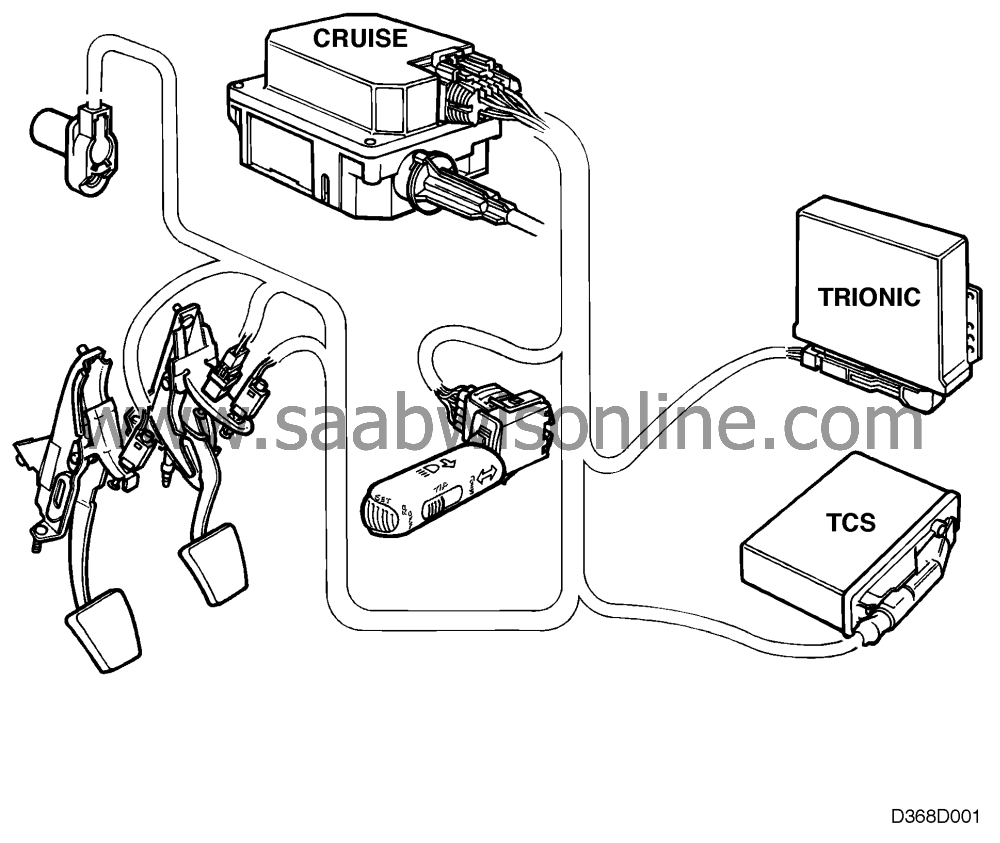System overview
| System overview |
The Cruise Control system consists of the following components and signals:
| • |
Control module
|
|
| • |
Switches
|
|
| • |
Brake and clutch pedal switches
|
|
| • |
Brake lights switch
|
|
| • |
Speed signal from the ABS control module
|
|
| • |
Cruise Control signal active, to the engine management system
|
|
| Cars with TCS |

On cars equipped with the Traction Control System (TCS), +30 current is supplied from the brake lights switch to terminal G (7) of the Cruise Control system control module via the TCS control module. This is to enable the TCS control module to disengage the Cruise Control system if wheelspin occurs for more than one second.
| Cars with TRIONIC |
On cars equipped with the TRIONIC engine management system, the Trionic control module receives a signal from terminal J (9) of the Cruise Control system control module telling it that the Cruise Control system is engaged.
This ensures smoother control of the car's speed.
| Cars with Sensonic |
The power supply to the cruise control is from pin 9 on Sensonic via the brake pedal switch. When the gear is changed, the power is interrupted and the cruise control is disengaged.
| Cars with automatic transmission |
The Cruise Control system is supplied with current from fuse 9 via the idling- speed compensation switch in the selector lever position sensor and also from fuse 22. This ensures that the system will be operative when the selector lever is in any of the drive positions (D,3,2,1).



